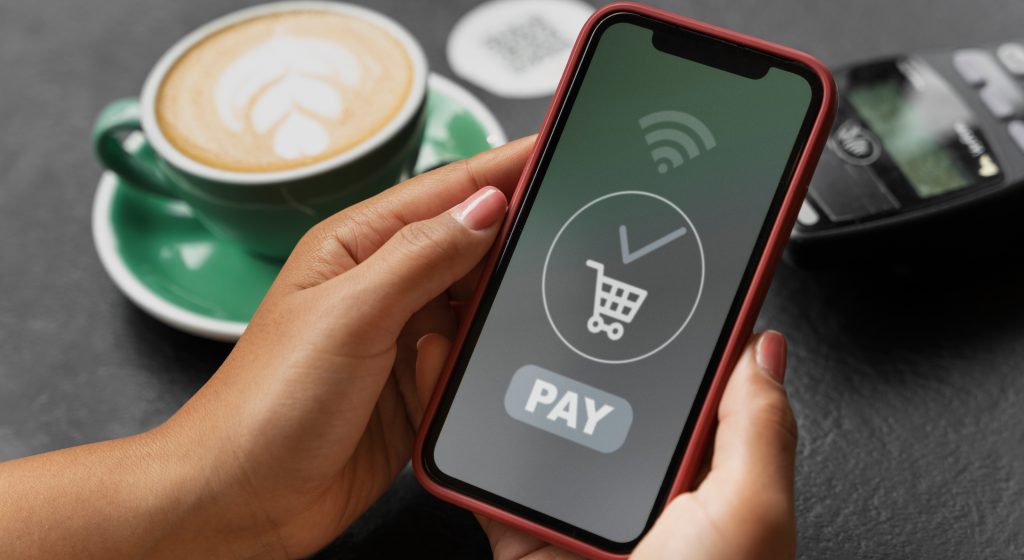DYK Amazon is facing another lawsuit?
The retailer allegedly used non-public data belonging to UK merchants without authorization to manipulate the Featured Offer (formerly Buy Box). Now, the merchants want to face Amazon in court and demand $1.28 billion. That’s one expensive lawsuit!
By the way, we have another story about an expensive headache that might involve you.
- Identity fraud in ecommerce 🥷
- Important facts about online reviews 📜
- Ecommerce payment preferences 💳
- Seller Fulfilled Prime qualifications 💼

BLACK MARKET
According to a report by Retailbiz, the cost of fraud will reach $362 billion between 2023 and 2028. And do you know how much it will cost to resolve it?
💵 $3.75 per $1 of fraudulent activity!
That’s gonna be a very expensive headache for small and big businesses alike. To curb losses, retailers must understand what ecommerce fraud is prevalent and how they can stop it.
Common retail fraud
So far, identity fraud has been the most challenging problem. There are 3 tactics bad actors use to deceive sellers:
- Account takeover: Cybercriminals stole legitimate customer credentials to commit fraudulent transactions.
- Solution: Integrate multi-factor authentication (MFA) at login to detect takeovers.
- New account fraud: Cybercriminals create new accounts that they let become dormant for a while. When it’s less suspicious, they will put them to fraudulent use.
- Solution: Monitor account creation to identify suspicious activities.
- Bot attacks: Bad actors use bots to create numerous fake accounts.
- Solution: Monitor account creation processes to detect bot activity.
🛡️ A holistic solution is necessary
Needless to say, sellers’ and customers’ identities must be protected to combat identity fraud (and other types of fraud actually). To do this, you need a comprehensive strategy to detect fraud early. You can also simplify the checkout process to lessen the hijacking risks while improving shopping experience.

TOGETHER WITH REVIEWSCOOP
4 facts that prove online reviews are essential for business growth

Selling on Amazon involves more than just building a good storefront; it's about securing high-quality verified reviews on your Amazon product page.
Still not convinced? Here are some online review statistics you need to know:
- 99.9% of customers read reviews when they shop online.
- 96% of those specifically look for negative reviews. Customers are more likely to head straight to the reviews on the product page rather than the descriptions provided by the store.
- 49% of customers trust online reviews as much as personal recommendations from friends and family. In today's digital age, where the space is saturated with sponsored ads, word-of-mouth marketing is the best (and probably the cheapest) out there!
- 60% of consumers believe that the more reviews a business has, the more credible they are. Aside from quality, the quantity of reviews matters. It is perceived that a higher number of reviews is linked to a business' credibility and popularity.
So, does this mean new businesses are at a disadvantage since they don't have many reviews yet?
Yes, probably. But ReviewScoop is the best solution for this.
It's the safest way to get reviews and social proof from genuine testers, fast!
What you'll get:
- Hassle-free process - just reviews, no headaches
- High-quality verified product reviews for as low as $199/month
- Recurring monthly reviews
Use high-quality reviews as leverage against your competitors. Let your products shine with verified product reviews!

BITES OF THE WEEK
- New Page: The new FBA Inventory Age & Excess Analytics page analyzes aging inventory.
- Gifts for Dad: Here are some products you may want to consider selling on Father's Day.
- Google’s Reach: Amazon sellers are turning to Google Ads to boost brand visibility.

HOT TOPIC
The crucial role of payment options in maximizing your sales

As more consumers are being pulled into the world of ecommerce, online shops face the challenge of providing flexible payment options. It’s not an easy task because different buyer generations have different payment preferences.
The Future of Commerce breaks down generational trends in terms of ecommerce payments (so you don’t have to).
🏦 Pay per generation
According to the article, expectations and trends can be grouped into 3 main categories:
1. Security
- Baby Boomers (1946-1964)
- Have the highest concern for online safety
- Prefer traditional payment methods
- Gen Xers (1965-1980)
- Highly concerned with security and privacy
- Prefer payment methods with strong security records
- Millennials (1981-1996) & Gen Zs (1997-2020)
- Willing to share data for personalized experiences
- Prefer modern security measures like two-factor authentication and encrypted payments
2. Buyer financial health
- Baby Boomers
- Generally financially secure and favor straightforward payment options
- Gen Xers
- Financially stable and are at the peak earning potential
- Millennials
- Most face financial challenges like student debt
- Gen Zs
- Cautious spenders with low credit card usage. They favor budgeting tools and avoiding fees.
3. Convenience
- Baby Boomers
- Stick to traditional methods (like in-person payment) despite the inconvenience
- Gen Xers
- Moderate comfort with mobile payments. They prefer digital methods integrated with existing financial tools.
- Millennials
- Early adopters of mobile wallets and peer-to-peer payment apps
- Gen Zs
- Same with millennials but may delay purchases if preferred payment methods aren't available.
Why is this relevant?
Simple: the more payment options you have, the wider your sales net is. 🥅
By offering various payment methods, you’re not only maximizing your sales potential—you’re also making your brand more attractive to all generations of shoppers.

SELLER REFRESHER
Looking to try Seller Fulfilled Prime? Here’s how to qualify for the program

Buyers aren’t the only ones with preferences. As sellers, you also have your favorite news source (*ahem*), business model, and fulfillment options.
⭐ Speaking of fulfillment options, you may be all too familiar with Amazon’s FBA, FBM, and Seller Fulfilled Prime (SFP). The first two often have their spotlight moments, so Helium10 focuses on SFP to help you decide whether it’s worth trying (if you haven’t yet).
A little background
ICYDK, SFP enrollment was paused in 2020 and just reopened in October 2023. With the relaunch, Amazon promises better seller services.
SFP grants 3P sellers the Prime Badge—but only when they meet Amazon’s Prime standards. To be eligible you’ll need:
- Established store performance. We’re talking high fulfillment rate and low cancellation rate.
- Swift shipping speed. You should be able to offer same-day or next-day delivery.
- Dependable shipping options. You must use reliable carriers integrated with Amazon’s Buy Shipping Services.
- Proper inventory management. You should have an organized stock level tracking to prevent inventory issues.
- Excellent customer service, especially the means to provide prompt response to buyer inquiries and efficient issue resolution.
- Strict policy compliance. You must meet Amazon’s packaging, labeling, and shipping requirements.
- Good operational capacity, a.k.a. the ability to handle high order volumes efficiently.
⚠️ Warning: Caution is still required
Without a doubt, SFP is a great fulfillment alternative, especially when FBA gets congested. But as we said before, it also has stricter requirements. So while it’s a good idea to explore as many options as you can, it’s still a better one to always proceed with caution.








